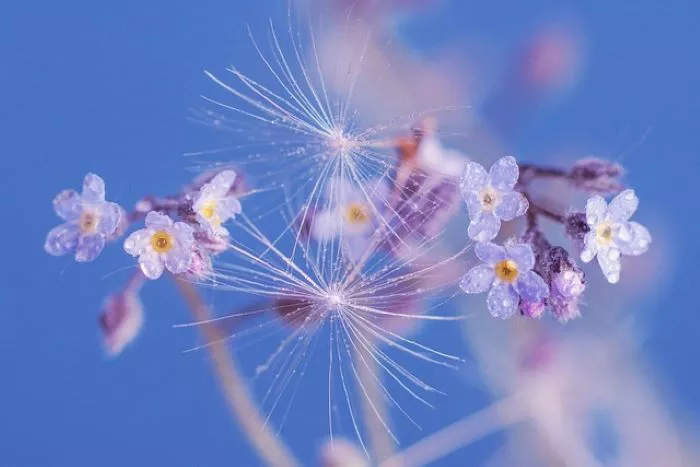Butterflies are not only beautiful creatures but also vital pollinators in our ecosystems. They play a crucial role in the reproduction of many flowering plants. Understanding which flowers attract butterflies and how these insects contribute to pollination can help gardeners and conservationists create habitats that support both butterflies and plant life. This article explores the relationship between butterflies and flowers, focusing on the types of flowers that butterflies pollinate.
The Role of Butterflies in Pollination
Butterflies are attracted to flowers primarily for nectar, which serves as their food source. As they feed, they inadvertently transfer pollen from one flower to another. This process is essential for the fertilization of many plants. Pollination leads to the production of seeds and fruit, ensuring the continuation of various plant species. Butterflies are particularly effective pollinators due to their long proboscis, which allows them to reach nectar deep within flowers.
Characteristics of Butterfly-Friendly Flowers
Flowers that attract butterflies typically possess certain characteristics. They tend to have bright colors, especially red, orange, yellow, and purple. These colors are visually appealing to butterflies. Additionally, many butterfly-attracting flowers have flat or open shapes, making it easier for butterflies to land and access nectar.
Fragrant flowers also attract butterflies. Scent plays a significant role in guiding butterflies to their food sources. Furthermore, flowers that produce nectar throughout the day are more likely to attract butterflies, as they provide a consistent food source.
Types of Flowers That Attract Butterflies
Several flower species are known to attract butterflies and serve as important sources of nectar. Here are some of the most popular flowers that butterflies pollinate.
Milkweed is one of the most crucial plants for butterflies, especially the monarch butterfly. The flowers of milkweed are rich in nectar and provide essential food for adult butterflies. Additionally, milkweed is the host plant for monarch caterpillars, making it vital for their life cycle.
Coneflowers, also known as echinacea, are another favorite among butterflies. Their large, daisy-like blooms produce abundant nectar. Coneflowers are resilient and easy to grow, making them excellent choices for butterfly gardens.
Butterfly bush is aptly named for its ability to attract butterflies. This shrub produces long clusters of small flowers in various colors. The sweet fragrance and abundant nectar make it a magnet for butterflies throughout the summer.
Lantana is a vibrant flowering plant that attracts a wide variety of butterflies. Its small clusters of flowers come in various colors, including yellow, orange, and pink. Lantana is drought-tolerant and thrives in sunny conditions, making it a popular choice for butterfly gardens.
Zinnias are cheerful annual flowers that butterflies love. They come in many colors and bloom from spring until frost. Zinnias are easy to grow from seeds and provide a reliable nectar source for butterflies.
Black-eyed Susans, with their bright yellow petals and dark centers, are not only beautiful but also attract butterflies. These flowers are native to North America and thrive in a variety of soil types. They bloom in late summer and fall, providing nectar when many other flowers have faded.
Asters are late-blooming flowers that provide essential nectar for butterflies in the fall. Their purple and blue hues attract various butterfly species. Asters are also beneficial for other pollinators, making them a valuable addition to any garden.
Creating a Butterfly-Friendly Garden
To attract butterflies to your garden, it is essential to create a welcoming environment. Plant a variety of flowers that bloom at different times throughout the growing season. This ensures a continuous food source for butterflies.
Choose native plants whenever possible. Native flowers are adapted to the local climate and soil conditions, making them easier to grow and maintain. They also provide the best habitat for local butterfly populations.
In addition to nectar sources, provide host plants for butterfly larvae. Many butterflies lay their eggs on specific plants that caterpillars feed on. For example, monarchs need milkweed, while swallowtails prefer parsley and fennel.
Avoid using pesticides and herbicides in your garden. These chemicals can harm butterflies and other beneficial insects. Instead, consider using organic gardening practices to maintain a healthy ecosystem.
Creating sunny spots and sheltered areas in your garden can also help attract butterflies. Butterflies are cold-blooded and require warmth from the sun to become active. They also need places to rest and hide from predators.
Conclusion
Butterflies are essential pollinators that contribute significantly to the health of our ecosystems. They are attracted to a variety of flowers that provide nectar and serve as host plants for their larvae. By understanding which flowers butterflies pollinate and creating butterfly-friendly gardens, we can support these beautiful insects and promote biodiversity. Planting a diverse range of flowers not only enhances the beauty of gardens but also helps sustain butterfly populations. By fostering environments that attract butterflies, we can enjoy their presence while contributing to the health of our planet.


